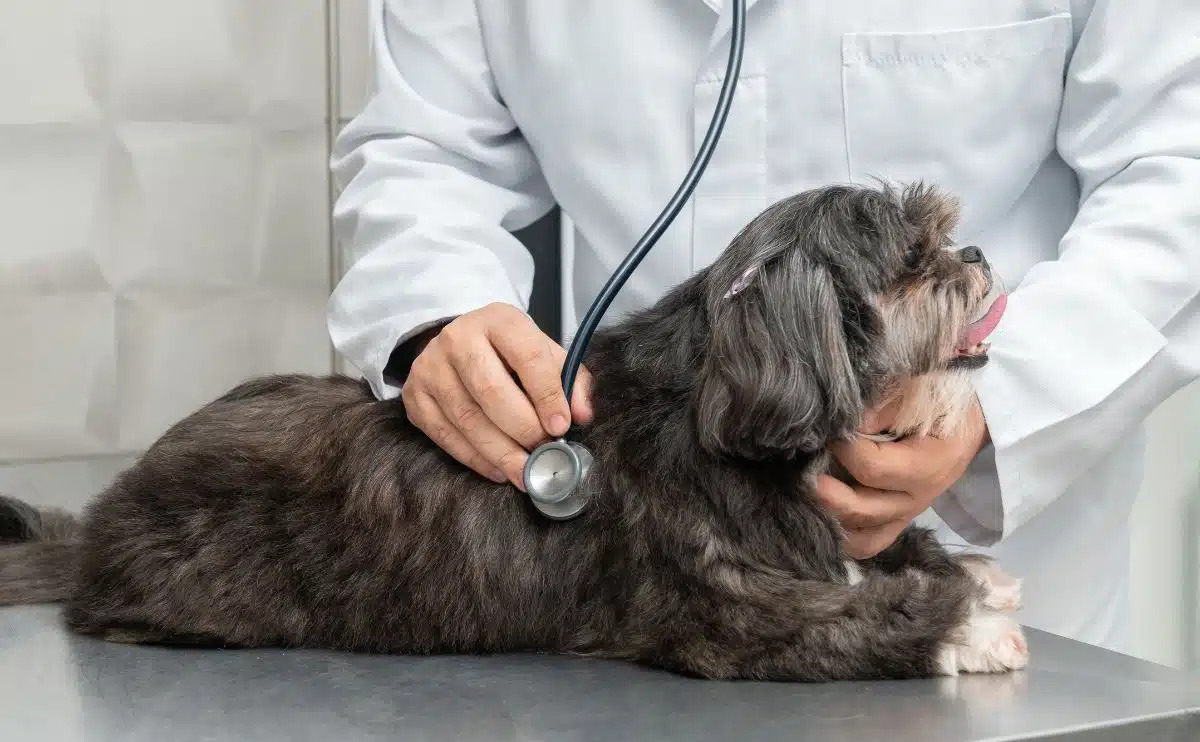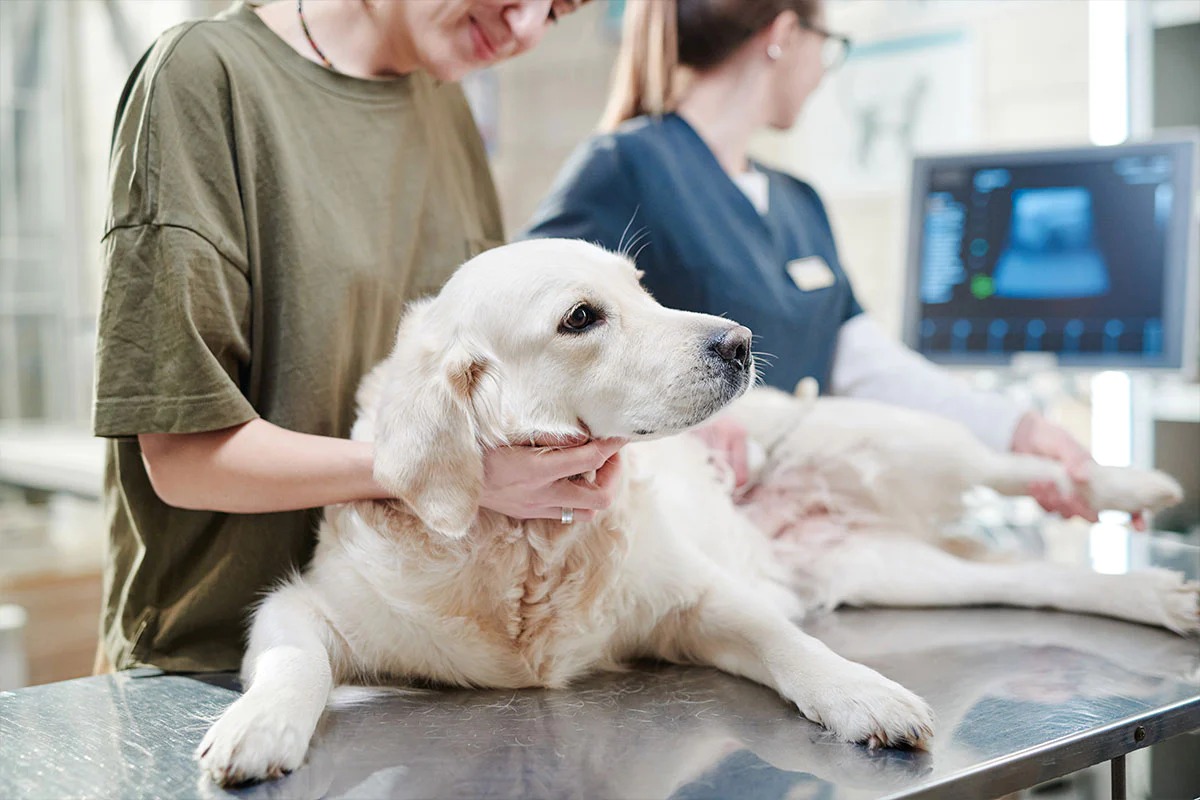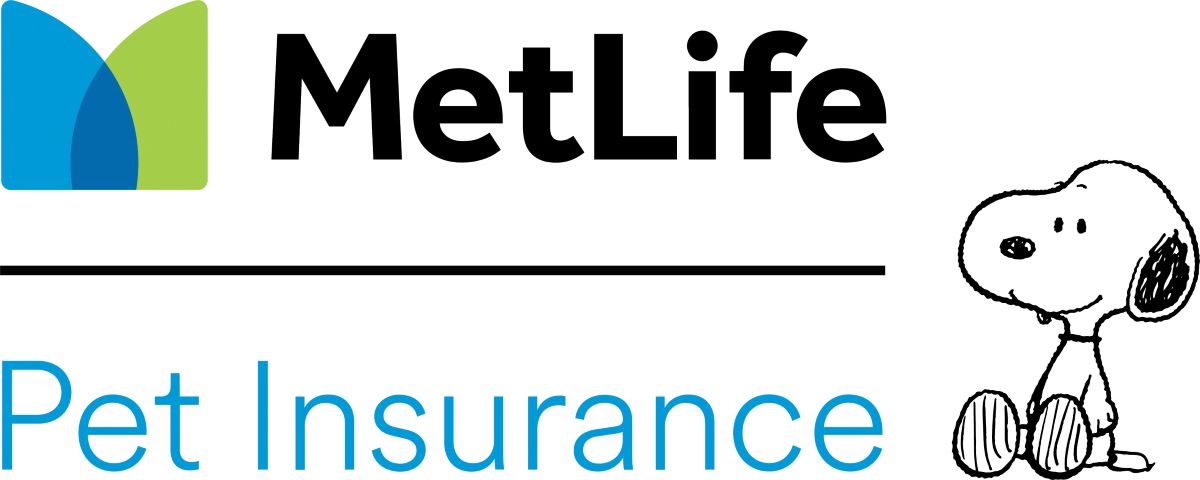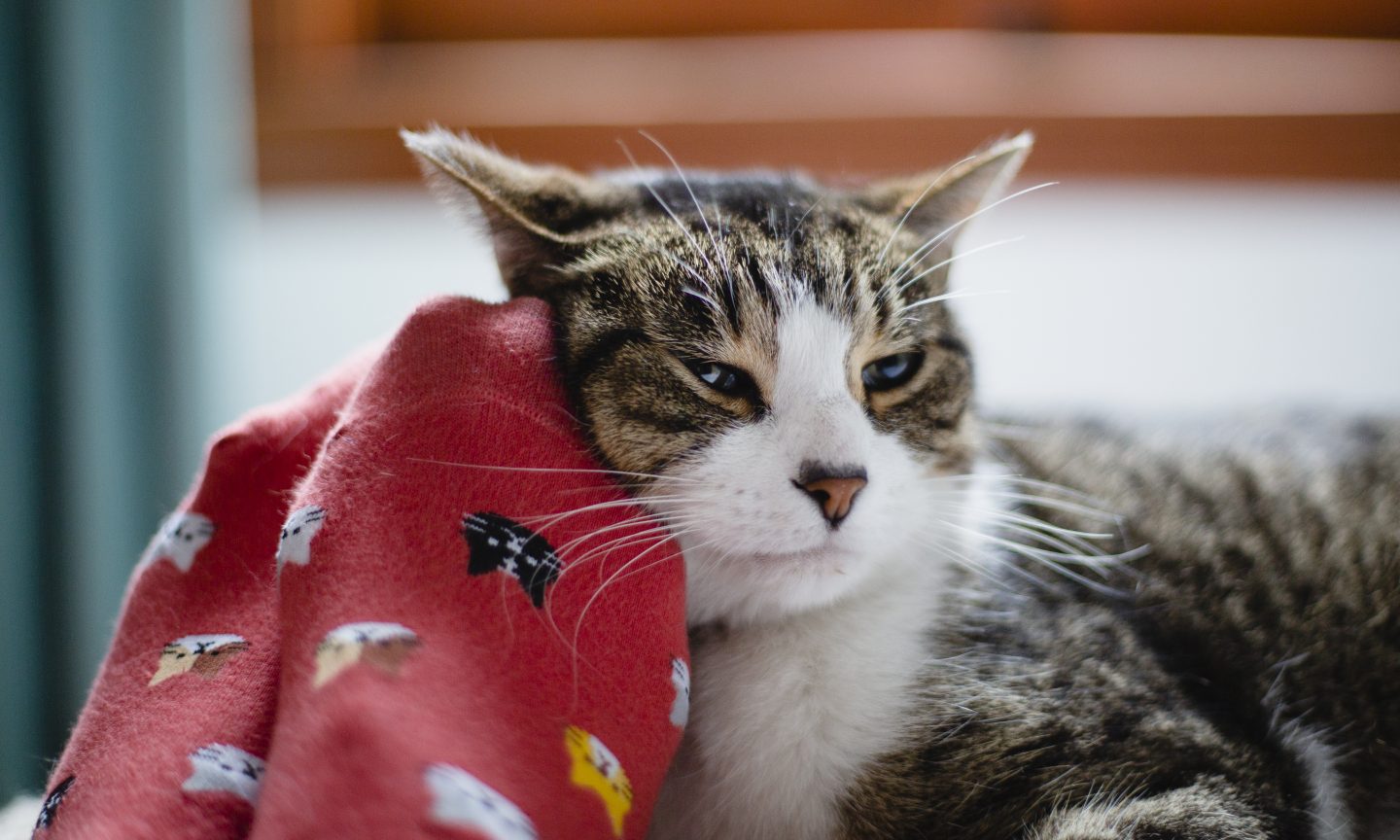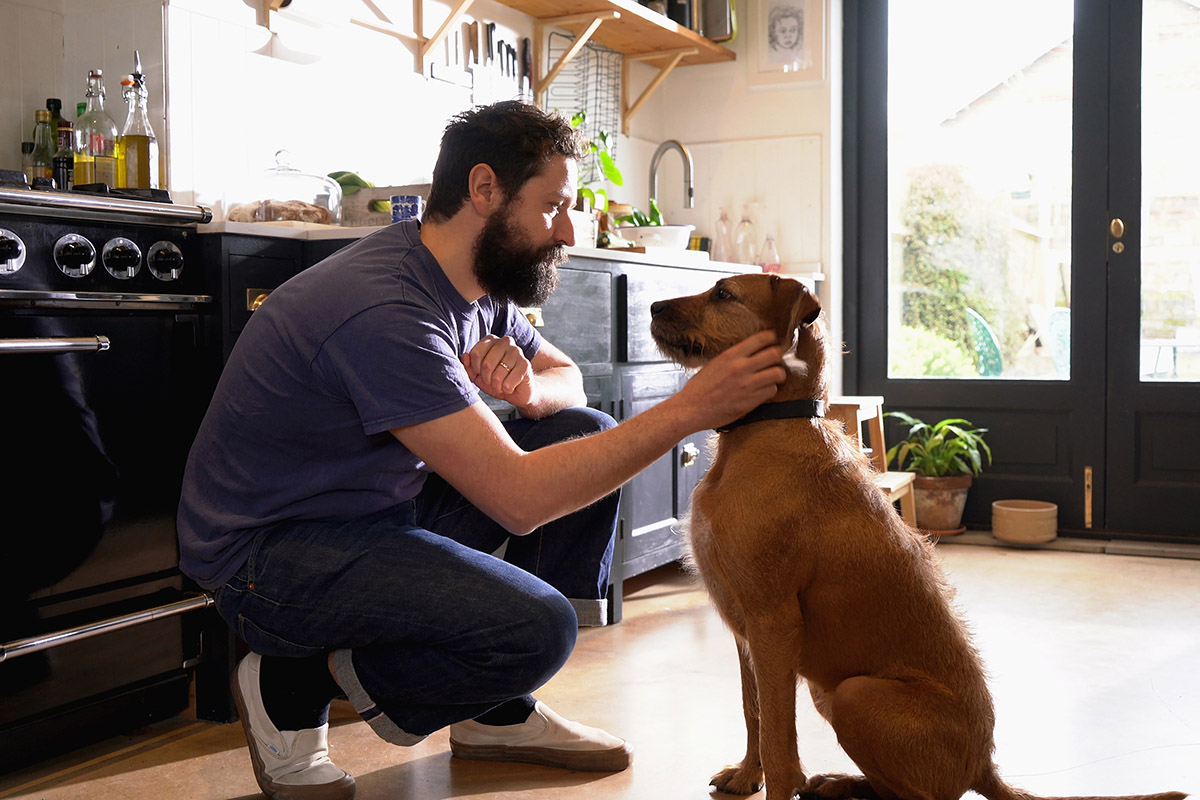

Finance
How Soon Does Pet Insurance Kick In
Modified: December 30, 2023
Discover when pet insurance coverage begins and how it can help manage your finances, ensuring the well-being of your furry friend from day one.
(Many of the links in this article redirect to a specific reviewed product. Your purchase of these products through affiliate links helps to generate commission for LiveWell, at no extra cost. Learn more)
Table of Contents
Introduction
Welcome to the world of pet insurance! As a responsible pet owner, you understand the importance of protecting your furry friends from unexpected accidents and illnesses. Pet insurance provides financial coverage for veterinary expenses, giving you peace of mind and the ability to provide the best care for your beloved companions.
But how soon does pet insurance kick in when you sign up for a policy? It’s a common question among pet owners, and in this article, we will delve into the details of coverage activation and waiting periods.
Pet insurance works similarly to other types of insurance. You pay a monthly premium to the insurance provider in exchange for coverage for certain medical expenses. However, unlike human health insurance, pet insurance often has waiting periods before coverage becomes effective.
During the waiting period, you won’t be able to make claims for certain types of veterinary care. The waiting period gives the insurance company time to assess the health of your pet and ensure that no pre-existing conditions are present.
Understanding the waiting periods and coverage activation is crucial as it directly impacts when and how you can utilize your pet insurance. Let’s dive deeper into the different types of waiting periods, coverage for accidents and injuries, illness coverage, pre-existing conditions, and factors that affect coverage activation.
Understanding Pet Insurance
Pet insurance is designed to help cover the cost of veterinary care for your pets. Just like human health insurance, pet insurance provides financial protection against unexpected medical expenses. However, there are some key differences to keep in mind.
When you enroll in a pet insurance policy, you will typically pay a monthly or annual premium. The cost of the premium depends on factors such as your pet’s age, breed, and overall health, as well as the type and level of coverage you choose.
Unlike human health insurance, pet insurance operates on a reimbursement model. This means that you will need to pay the veterinary bill upfront, and then submit a claim to the insurance provider for reimbursement. The insurance company will review the claim and reimburse you for the eligible expenses according to the terms of your policy.
It’s important to note that pet insurance typically does not cover pre-existing conditions. These are any illnesses, injuries, or symptoms that your pet had before the coverage started. This is why waiting periods are in place – to ensure that your pet doesn’t have any pre-existing conditions that could be claimed right away.
Another important aspect of pet insurance is that it usually does not cover routine wellness care, such as vaccinations, flea and tick prevention, and regular check-ups. Instead, pet insurance is designed to provide coverage for unexpected accidents, injuries, and illnesses.
Understanding the coverage options and limitations of pet insurance is crucial when considering a policy for your pet. It’s important to carefully read and review the terms and conditions of any pet insurance policy you are considering to ensure it aligns with your expectations and the needs of your pet.
Coverage Waiting Periods
When you sign up for a pet insurance policy, there is typically a waiting period before the coverage becomes effective. The waiting period is a set amount of time during which you cannot make claims for certain types of veterinary care.
The purpose of the waiting period is to prevent pet owners from enrolling in insurance after their pet has already become sick or injured. It allows the insurance company to ensure that no pre-existing conditions are present and that the policy is being used for unforeseen veterinary expenses.
The length of the waiting period can vary depending on the insurance provider and the type of coverage you choose. Typically, waiting periods range from a few days to a few weeks. It’s important to note that the waiting period begins from the day your policy is activated, not from the day you enroll.
During the waiting period, you will not be able to make claims for any illnesses or injuries that occur. However, it’s common for insurance providers to have separate waiting periods for accidents and illnesses.
It’s crucial to understand the waiting periods associated with your pet insurance policy to avoid any surprises or misunderstandings. Make sure to review the terms and conditions of your policy carefully to know when the coverage will become effective for accidents and illnesses.
In some cases, insurance companies may offer a shorter waiting period for accidents as compared to illnesses. This is because accidents are typically unexpected events, while illnesses may have been present before the policy was activated.
Keep in mind that waiting periods can vary between insurance providers and policies. Some insurance companies may offer options for shorter waiting periods in exchange for higher premiums, while others may have longer waiting periods but offer more comprehensive coverage. It’s essential to evaluate your pet’s specific needs and your budget when choosing a pet insurance policy.
Understanding the waiting periods and their implications will help you plan and make informed decisions regarding your pet’s healthcare. Be sure to consider this aspect when comparing different insurance options.
Different Types of Waiting Periods
When it comes to pet insurance, there are typically two types of waiting periods: accidents and illnesses. Let’s take a closer look at each type and understand how they can affect the activation of coverage.
The accident waiting period refers to the time period in which you cannot make claims for any injuries or accidents that occur to your pet. This waiting period is usually shorter than the illness waiting period, typically ranging from a few days to a week. During this time, coverage for accidental injuries such as broken bones, lacerations, or ingestion of foreign objects may not be available.
The illness waiting period, on the other hand, refers to the time period in which you cannot make claims for any illnesses that your pet may develop. The length of the illness waiting period can vary significantly, ranging from a few weeks to several months. It is important to note that during this waiting period, coverage for any illnesses, such as infections, chronic conditions, or hereditary disorders, may not be available.
It’s crucial to understand that waiting periods are in place to prevent pet owners from enrolling in insurance after their pet has already become sick or injured. Insurance companies want to ensure that the policies are being used for unforeseen and unexpected expenses rather than pre-existing conditions.
When comparing pet insurance policies, it’s important to consider the waiting periods associated with each type of coverage. Some policies may have shorter waiting periods for accidents, making them more suitable for pet owners who are concerned about unexpected injuries. Others may have longer waiting periods for illnesses, which could be a better option for those looking for coverage for chronic or hereditary conditions.
It’s essential to carefully review the terms and conditions of the pet insurance policy to understand the waiting periods and how they may impact the activation of coverage. This will allow you to make an informed decision based on your pet’s specific needs, your budget, and your risk tolerance.
By understanding the different types of waiting periods, you can better prepare yourself for when pet insurance coverage kicks in and ensure that you are able to provide the necessary care for your furry friend when they need it the most.
Accidents and Injuries Coverage
Accidents and injuries are unpredictable events that can happen to our pets at any time. Whether it’s a broken bone from a fall, a laceration from a sharp object, or an ingestion of a foreign object, these incidents can result in significant veterinary expenses. This is where pet insurance coverage for accidents and injuries becomes crucial.
When you have pet insurance, coverage for accidents and injuries typically includes veterinary expenses related to sudden and unexpected events. This can include diagnostics, emergency visits, surgery, medications, hospitalization, and rehabilitation.
It’s important to note that coverage may vary between insurance providers and policies. Some may have specific limits or exclusions for certain types of accidents or injuries, so it’s essential to review the policy details to understand what is covered and what is not.
Insurance providers may also have different levels of coverage for accidents and injuries. Some policies may offer basic coverage for accidents, while others may provide comprehensive coverage that includes additional benefits such as alternative therapies or behavioral treatment resulting from a covered accident.
When it comes to accidents and injuries, it’s crucial to understand the waiting period associated with the coverage. As mentioned earlier, there is typically a waiting period before the coverage becomes effective. During this time, you will not be able to make claims for accidents and injuries that occur to your pet.
Once the waiting period has passed, you can start making claims for accidents and injuries that happen to your pet. Keep in mind that you will need to provide the necessary documentation, such as veterinary records and invoices, to support your claim.
Accidents and injuries coverage can provide peace of mind knowing that you have financial protection in case of unexpected events. It enables you to provide the necessary care for your furry friend without the burden of excessive veterinary bills.
When considering pet insurance, it’s important to evaluate the coverage for accidents and injuries offered by various insurance providers. Compare the waiting periods, coverage limits, exclusions, and additional benefits to choose a policy that aligns with your pet’s specific needs and your budget.
By having accidents and injuries coverage, you can ensure that your pet receives prompt and proper care in the event of an unforeseen accident or injury.
Illness Coverage
Alongside accidents and injuries, illness coverage is a critical component of pet insurance. Illnesses can range from common infections to chronic conditions and can lead to significant veterinary expenses. Having illness coverage ensures that you can provide the necessary medical care for your pet when they fall ill.
When you have pet insurance with illness coverage, it typically includes coverage for diagnostic tests, treatments, medications, hospitalization, and other veterinary expenses related to covered illnesses. This can encompass a wide range of conditions such as infections, allergies, digestive issues, respiratory problems, and more.
However, it’s important to understand that pre-existing conditions are usually not covered by pet insurance policies. Pre-existing conditions are illnesses or symptoms that existed or were diagnosed before the policy’s activation. This is why insurance companies implement waiting periods to evaluate the pet’s health and determine if any pre-existing conditions are present.
Similar to accidents and injuries coverage, illness coverage also comes with a waiting period. During this waiting period, which can range from a few weeks to several months, you will not be able to make claims for any illnesses that your pet develops.
Once the waiting period has passed, you can seek coverage for illnesses that occur after the waiting period ends. It’s crucial to review the policy details to understand the waiting periods and any specific limitations or exclusions related to illness coverage.
Insurance providers may have different levels of coverage for illnesses, offering various options to suit your needs. Some policies may have lower premiums but provide basic coverage for common illnesses, while others may have higher premiums but offer more comprehensive coverage for a broader range of conditions.
When considering illness coverage, it’s essential to evaluate the reimbursement percentage and any annual or lifetime limits imposed by the insurance provider. Understanding these factors will give you a clear idea of the financial protection you have for your pet’s illnesses.
Having illness coverage can provide peace of mind, knowing that you can provide the necessary medical care for your pet if they fall ill. It ensures that you have the means to address unexpected medical expenses and make decisions based on your pet’s well-being rather than financial constraints.
Consider your pet’s age, breed, and health history when selecting a pet insurance policy with illness coverage, and choose a plan that best suits your pet’s specific needs and your budget.
Pre-Existing Conditions
When it comes to pet insurance, the concept of pre-existing conditions plays a significant role in coverage. Pre-existing conditions are illnesses, injuries, or symptoms that your pet has before the policy’s activation or during the waiting period.
Insurance companies generally exclude coverage for pre-existing conditions as they are considered pre-existing and, therefore, not eligible for reimbursement. This exclusion is in place to prevent individuals from enrolling in insurance after their pet has already become sick or injured, thus minimizing the risk of adverse selection.
It’s important to understand that different insurance providers may have varying definitions and criteria for pre-existing conditions. Some providers may define pre-existing conditions as any condition for which the pet received veterinary care or showed symptoms before the policy start date or waiting period.
Since pre-existing conditions are typically excluded from coverage, it’s crucial to ensure that your pet’s health is thoroughly assessed and evaluated before enrolling in a pet insurance policy. This means that any signs, symptoms, or diagnosis of an illness or injury should be properly disclosed to the insurance provider.
It’s worth noting that if an illness or injury develops after the waiting period ends or the policy becomes active, it will be considered a new condition and fall under the coverage of the policy, subject to the policy terms and conditions.
When considering pet insurance, take the time to carefully review and understand the policy’s definition of pre-existing conditions and how they are handled. It’s vital to be transparent and provide accurate information about your pet’s health history to avoid any ambiguities or disputes in the future.
While pre-existing conditions are generally not covered, pet insurance can provide financial protection for future unexpected accidents, injuries, and illnesses that may occur after the waiting period ends. Having pet insurance in place ensures that you can address new and unforeseen medical expenses without as much financial burden.
When selecting a pet insurance policy, consider the waiting periods, coverage limitations, and exclusions related to pre-existing conditions. By understanding these factors, you can make an informed decision about the coverage that best suits your pet’s specific needs and your budget.
Coverage Activation Period
The coverage activation period refers to the time between when you enroll in a pet insurance policy and when the coverage becomes effective. It’s an important aspect to consider when choosing a pet insurance provider and understanding when you can start utilizing the benefits of the policy.
The activation period can vary depending on the insurance provider and the specific policy you choose. It’s crucial to carefully review the terms and conditions of the policy to understand when the coverage will take effect.
In most cases, the coverage activation period begins from the day your policy is activated, which may differ from the day you enroll or make the initial payment. The insurance company will outline the specific timeframe for the activation period.
During the coverage activation period, it’s important to note that you may not be able to make claims for any veterinary care. This waiting period gives the insurance company time to assess the health of your pet and ensure that no pre-existing conditions are present.
Understanding the coverage activation period is crucial as it allows you to plan for your pet’s healthcare needs and determine when you can start utilizing the benefits of the insurance policy.
It’s important to note that while coverage for accidents and injuries may start sooner, coverage for illnesses typically has a longer activation period. This is because illnesses may have longer waiting periods to assess the pet’s health and to prevent coverage for pre-existing conditions.
Factors such as your pet’s age, breed, and overall health can also influence the length of the activation period. Some insurance providers may require a shorter activation period for younger and healthier pets, while others may have longer periods for specific breeds or older pets.
When comparing pet insurance policies, pay close attention to the activation period and consider how it aligns with your pet’s specific needs. If you have a pet that requires immediate coverage due to existing health issues, you may want to choose a policy with a shorter activation period.
By understanding the coverage activation period, you can better plan for your pet’s healthcare and ensure that you have the necessary financial protection when unexpected accidents, injuries, or illnesses occur.
Make sure to review the terms and conditions of the policy and contact the insurance provider if you have any questions or clarifications regarding the coverage activation period.
Factors Affecting Coverage Activation
Several factors can influence the activation of coverage in pet insurance policies. It’s important to be aware of these factors as they can impact when your insurance coverage becomes effective and how it applies to your pet’s healthcare needs.
1. Waiting Periods: One of the primary factors that affect coverage activation is the waiting period. Waiting periods are specific timeframes during which certain types of veterinary care are not covered. The waiting period allows the insurance company to assess the pet’s health and ensure the absence of any pre-existing conditions. The length can vary depending on the policy and the type of coverage, such as accidents and injuries or illnesses.
2. Pet’s Age: The age of your pet can also influence the coverage activation. Some insurance providers may have specific age restrictions or different waiting periods based on the pet’s age. Puppies or kittens may have shorter waiting periods, while older pets may require a longer waiting period before coverage becomes effective.
3. Pre-Existing Conditions: If your pet has any pre-existing conditions, it can affect the activation of coverage. In most cases, pre-existing conditions are not covered by pet insurance policies. If your pet has a pre-existing condition, it’s important to disclose it to the insurance provider to avoid any potential issues or disputes in the future.
4. Underwriting Process: The underwriting process is an assessment carried out by the insurance company to evaluate the pet’s health and determine the eligibility for coverage. This process typically involves reviewing medical records and potentially requesting additional information from your veterinarian. The duration of the underwriting process can impact the activation of coverage.
5. Policy Start Date: The policy start date is the date from which your coverage begins. Depending on the insurance provider, the policy start date may be the same as the day you enroll, or it may start from a later date, such as when the application is approved or the initial payment is made. It’s important to review the policy documents carefully to understand the policy start date and when the coverage becomes effective.
6. Breed and Health: Some insurance providers may have specific waiting periods or coverage limitations based on the breed or health history of your pet. Certain breeds may be more prone to certain conditions, and insurance companies may adjust waiting periods or coverage based on this information.
It’s important to consider these factors when selecting a pet insurance policy. Understanding the waiting periods, underwriting process, and any breed-specific considerations will help you make an informed decision based on your pet’s specific needs and your budget.
Keep in mind that each insurance provider may have different guidelines and policies regarding coverage activation. Review the terms and conditions of the policy carefully and reach out to the insurance company if you have any questions or concerns about the factors affecting coverage activation.
Conclusion
Understanding when pet insurance coverage kicks in and the factors that affect its activation is crucial for every pet owner. Pet insurance provides financial protection and peace of mind by covering unexpected accidents, injuries, and illnesses. However, waiting periods and certain factors can impact when the coverage becomes effective.
Throughout this article, we have explored various aspects of pet insurance coverage activation, including waiting periods, different types of waiting periods for accidents and illnesses, coverage for accidents and injuries, illness coverage, pre-existing conditions, the coverage activation period, and factors that can affect coverage activation.
Waiting periods help insurance companies assess the pet’s health and prevent coverage for pre-existing conditions. The length of waiting periods can vary between accidents and illnesses. Accidents waiting periods are typically shorter, while illness waiting periods tend to be longer.
Accidents and injuries coverage includes veterinary expenses related to sudden and unexpected events, while illness coverage addresses the costs of various illnesses that may affect your pet. It’s important to consider the waiting periods, coverage limits, and exclusions when selecting a pet insurance policy.
Pre-existing conditions are generally not covered by pet insurance. These are illnesses, injuries, or symptoms that exist before the policy’s activation. Understanding the definition of pre-existing conditions and being transparent about your pet’s health history is crucial to avoid any complications in the future.
The coverage activation period is the time between enrolling in a policy and when the coverage becomes effective. It’s important to review the policy terms and conditions to understand when your coverage will begin.
Factors such as waiting periods, your pet’s age, pre-existing conditions, the underwriting process, the policy start date, and breed and health considerations can influence coverage activation. It’s important to evaluate these factors when choosing a pet insurance provider and policy that best suits your pet’s specific needs and your budget.
In conclusion, pet insurance is a valuable investment to protect your furry companions and provide them with the best possible care. By understanding how coverage activation works, you can make informed decisions regarding your pet’s healthcare and ensure that you are prepared for unforeseen events that may arise in the future.
Remember to carefully review the terms and conditions of the pet insurance policy, ask questions, and compare different options to find the coverage that offers the best protection for your beloved pet.
